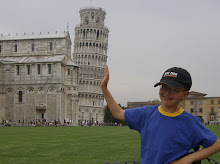This is Part 3 of "Character Building Dramas:Pasteur 2". Enjoy!!!
Monday, October 26, 2009
Character Building Dramas:Pasteur 2:Part 2
This is Part 2 of "Character Building Dramas:Pasteur 2". Enjoy!!!
Sunday, October 25, 2009
Character Building Dramas:Pasteur 2:Part 1
This is the first part of "Character Building Dramas:Pasteur 2". Enjoy!!!
Chracter Building Dramas:Pasteur 1:Part 5
The Final Part of "Chracter Building Dramas:Pasteur 1. Enjoy!!!
Saturday, October 24, 2009
Thursday, October 22, 2009
Chracter Building Dramas:Pasteur 1:Part 3
This is the thrid part of Chracter Building Dramas:Pasteur 1:Part 3. Enjoy!!!
Wednesday, October 21, 2009
Character Building Dramas:Pasteur 1:Part 1
This is a video-drama about the great scientist, Louis Pasteur. Enjoy!!!
Tuesday, October 6, 2009
Two scientists that helped invent vaccines:Louis Pasteur and Robert Koch
Louis Pasteur(1882-1895)
How does a vaccine work? This remained a mystery until the middle of the 18th century. Then, scientists Louis Pasteur and Robert Koch discovered that infectious diseases were passed on by microbes such as bacteria and viruses. So, they began a proper scientific study of infectious diseases. Pasteur developed a vaccine against rabies and antrax, as well as a procedure called pasteurization, named after him. This is still used today to preserve different kinds of foods, especially milk.
Robert Koch
The German doctor Robert Koch(1843-1910) identified the bacteria which cause tuberculosis, a dangerous disease which mainly attacks the respiratory(breathing) system. Koch also discovered tuberculin, a substance which is extracted from bacteria and which helps in the diagonosis of this disease, even when there are no outward signs or symptoms present.
How does a vaccine work? This remained a mystery until the middle of the 18th century. Then, scientists Louis Pasteur and Robert Koch discovered that infectious diseases were passed on by microbes such as bacteria and viruses. So, they began a proper scientific study of infectious diseases. Pasteur developed a vaccine against rabies and antrax, as well as a procedure called pasteurization, named after him. This is still used today to preserve different kinds of foods, especially milk.
Robert Koch
The German doctor Robert Koch(1843-1910) identified the bacteria which cause tuberculosis, a dangerous disease which mainly attacks the respiratory(breathing) system. Koch also discovered tuberculin, a substance which is extracted from bacteria and which helps in the diagonosis of this disease, even when there are no outward signs or symptoms present.
Monday, October 5, 2009
The great stages in the battle against infectious diseases
1796-Edward Jenner:vaccine against smallpox
1881-Louis Pasteur:vaccine against rabies
1890-Emil Adolf von Belming and Shibasaburo Kitasato:vaccine against tetanus and diptheria
1922-Leon Calmette and Camille Guerin:vaccine against tuberculosis
1954-Jonas E. Salk:anti-polio vaccine. Three years later(in 1957),another type of vaccine was invented by Albert Bruce Sabin;today we use both types of vaccine.
1960-John F. Enders:anti-measles vaccine
1962-Thomas H. Weller:anti-German Measles vaccine and anti-Whooping Cough vaccine
1991-vaccine against Hepatitus B
1881-Louis Pasteur:vaccine against rabies
1890-Emil Adolf von Belming and Shibasaburo Kitasato:vaccine against tetanus and diptheria
1922-Leon Calmette and Camille Guerin:vaccine against tuberculosis
1954-Jonas E. Salk:anti-polio vaccine. Three years later(in 1957),another type of vaccine was invented by Albert Bruce Sabin;today we use both types of vaccine.
1960-John F. Enders:anti-measles vaccine
1962-Thomas H. Weller:anti-German Measles vaccine and anti-Whooping Cough vaccine
1991-vaccine against Hepatitus B
Sunday, October 4, 2009
Why is it that we do not become ill once we are vaccinated?
Each time we overcome infection, our bodies are left with a special system of defence against the germs which caused our illness. So, if we get the same infection again, our bodies are ready to fight it with the antibodies it has produced. Vaccination is based on this reaction. A human body is injected with a weak form of infection by dead or weak germs, and this is enough to produce the antibodies necassary to fight it
Subscribe to:
Posts (Atom)
